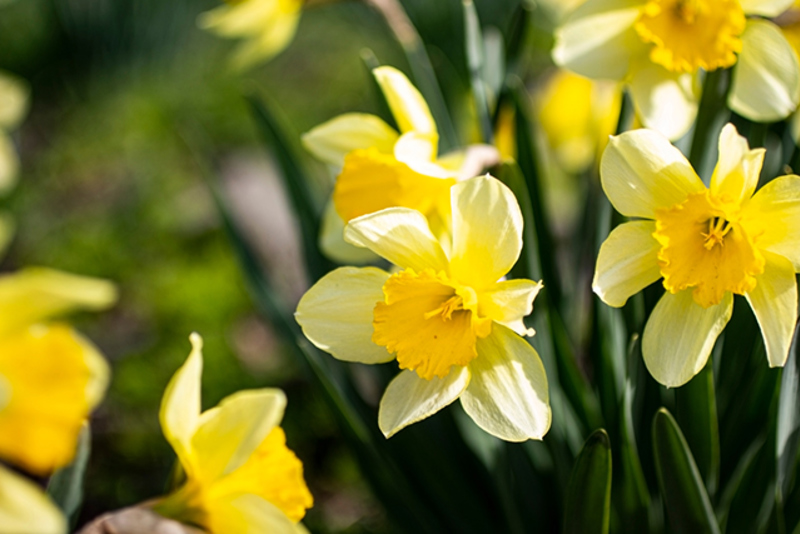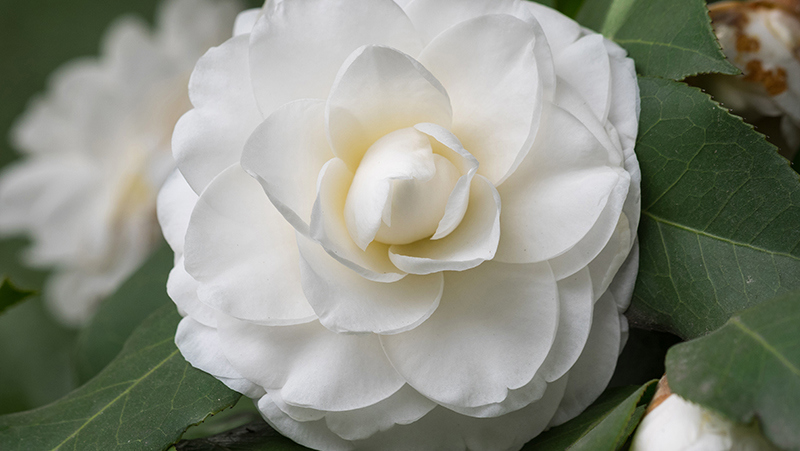Yates Account
Join now
Create a Yates account today!
Sign up to join the Yates Garden Club for monthly e-mails packed with seasonal inspiration, tips for success & exclusive promotions.
Plus if you’re a Garden Club member you can take part in the Yates Growing Community - a blog to share successes, get advice & win prizes in fun challenges along the way!

Forgot password
Enter the email address associated with your account, and we'll email you a new password.

Winter doesn't need to be dull! Here's a selection of cheerful blooms and winter perfumes to brighten up your winter months.
Hellebores – The Winter Rose
Colour your winter months with the dramatic blooms of hellebores. From the classic ivory and rose blush of Hellebore ‘Winter Sunshine’, to the sumptuous musk of Hellebore ’Penny’s Pink’, these hardy and easy to grow plants can be shown off indoors when in full bloom, then planted out when the display's over. for many more years of moody cool season colour.
Hellebores will cope with shade, although they bloom better in dappled light than dense shade. They also cope with root competition from large trees. For more a more prolific show of flowers, apply Yates Thrive Rose & Flower Granular Plant Food, which contains fast-acting nutrients, plus slow release fertiliser for feeding for up to 3 months.

Daphne: Fabulous Winter Perfume
Daphne (Daphne odora) has a deliciously sweet winter perfume, and blooms prolifically through winter. Whether you plant it in a container or in the ground, it's bound to fill your garden with gorgeous winter scent.
To grow daphne, good drainage is essential, so select a pot with plenty of drainage holes, or a position in a raised garden bed so water drains away freely.
Daphne prefers a slightly acidic soil, so treat alkaline soil with Yates Soil Acidifier Liquid Sulfur to reduce the pH. Also keep an eye out for scale insects that can be a common daphne insect pest. To control scale, spray daphne with Yates Conqueror Spraying Oil.
Don’t forget to feed daphne with a potassium boosted fertiliser like Yates Thrive Rose & Flower Granular Plant Food. It will help promote healthy green leaves and lots of heavenly flowers.
Daphne ‘Perfume Princess’ is a popular choice; it begins flowering earlier than common daphne, and flowers for a very long period. The blooms of 'Perfume Princess' are also larger and more plentiful, clustering at the tips of the stems and along the branches.

Dahlias – Lift or Leave?
Traditionally growers of dahlias lift tubers from the ground as soon as foliage dies down, then store them in a cool dry place until mid-spring, when they replant. Depending on your local soil and winter weather conditions, dahlias may actually survive quite happily in ground over winter.
Dwarf dahlias, and new generation, multi-branching varieties, like ‘Love Affair’ or ‘Home Run’ (bred in NZ by Dr. Keith Hammett), can remain in the ground for many years.
In areas with wet winters though, where soil stays moist and cold for long periods, dahlia tubers may rot in the ground. In this situation, digging and storing is a wise move.
If you’re planning to plant dahlias this coming spring, start now to improve and enrich the soil by digging in a few handfuls of Yates Dynamic Lifter Organic Plant Food where you'll be planting.

It's Soil Test Time!
Testing the soil pH – the degree of garden soil acidity or alkalinity – every few years is a good idea. Although the performance of certain plants can often provide clues to your soil pH, if you know the exact pH from testing you can precisely adjust the soil pH to suit your chosen plants.
- Acidic Soil (pH 4.5 – 5.5)
- Less Acidic Soil (pH 5.5 – 7) 7 is neutral.
- Alkaline Soil (pH 7 – 8.5)
Adjusting soil pH using Yates liquid products is much easier than granular formulations. They are faster-acting and there’s no dust or digging, simply mix and apply according to the directions on the pack. Yates Hydrangea Pinking Liquid Lime Dolomite helps raise the soil pH for more vibrant pink blooms on hydrangeas, and is also useful to ‘sweeten’ acid soils for growing vegetables and sweet peas.
Yates Soil Acidifier Liquid Sulfur lowers the pH of the soil, making it more acidic. It's ideal to use when growing acid-loving plants like blueberries, azaleas, camellias, rhododendrons and magnolias.

Carpets Of Colour
Alyssum Magic Circles Mix is a delightful, easy to grow annual. It’s a pretty, low grower with a mix of lilac, cream, pink and white flowers. Sow seeds directly into garden beds or pots and cover with a fine layer of mix and keep moist. Seeds will germinate in 7-14 days. The long-lasting blooms have a soft honey scent, and once it’s sown, readily self-seeds, so it will pop up again year after year. If you prefer an all-white look, choose Alyssum Carpet of Snow.

Feeding Flowers and Bulbs
To promote lots of growth and encourage plenty of flowers, liquid-feed your flowering annuals, like alyssum, marigolds, pansies, violas and poppies with Yates Thrive Natural Fish & Seaweed+ Plant Food Concentrate. It's also perfect for feeding spring-flowering bulbs like hyacinths and tulips.
Also feed bulbs like jonquils, snowdrops and early daffodils that have already flowered. They’ll absorb nutrients through their foliage and store the food for next seasons flowering. Leave bulb foliage to die down naturally.
Show Your Love With Compost
Enrich the soil under magnolias, camellias, rhododendrons and azaleas by spreading a 50mm layer of compost as mulch. The organic matter in compost protects the surface roots of your flowering trees and shrubs, improves soil structure and encourages worms and beneficial organisms. In addition, sprinkle some Yates Dynamic Lifter Organic Plant Food then water it all in well. Your soil and your plants will love it!

















Share
Share this article on social media